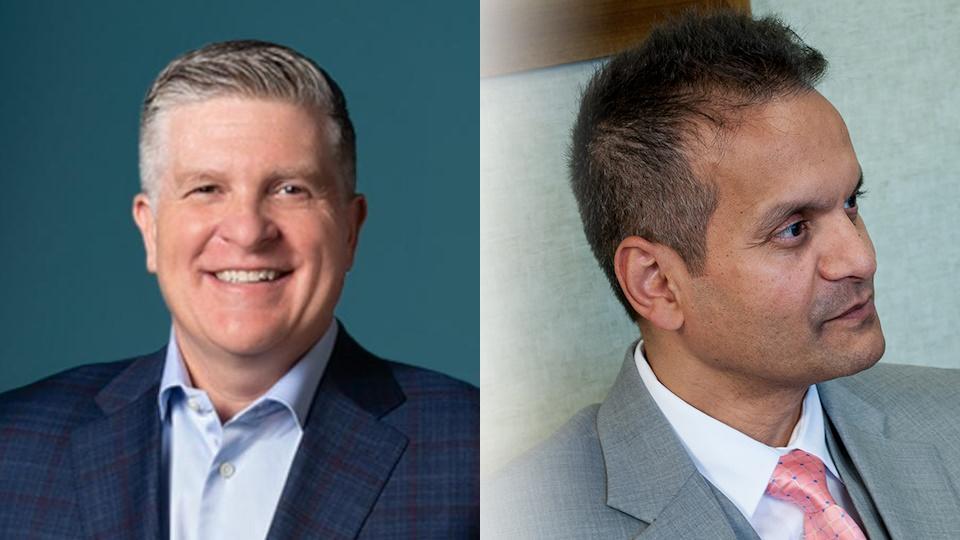Studying inequities throughout the pandemic

Alain Labrique, PhD, professor and associate chair of research at Johns Hopkins Bloomberg School of Public Health (JHSPH) and chair of the World Health Organization (WHO) digital health guidelines development group discusses with us the ongoing research study, National Pandemic Pulse, he and his colleagues are performing in the US.
Using comprehensive, repeat surveys deployed across the US population, Labrique and fellow researchers at JHSPH are measuring disparities and inequities due to COVID-19 among marginalised populations.
"From the beginning of the pandemic, we noted inequities in the way the US population was experiencing disease incidence – the cases of COVID and the access to testing, level of clinical services available, and, when the vaccine became available, differential levels of access to the vaccine," Labrique says.
The researchers wanted to document these injustices to obtain an extensive picture of the scale of the inequities and the social processes that cause a lack of trust in the overall system.
Analysis over time
Near the beginning of the pandemic, Labrique and his team documented inequities in the risk of exposure to the virus.
Minorities and people of colour were more likely to hold essential worker positions, which became hazardous environments, as opposed to many of the upper socioeconomic classes of the US who could shelter in place and reduce their mobility.
As the pandemic progressed, those injustices trickled into other facets, such as access to testing.
“When we started to roll out testing facilities, we saw disparities in access to testing. Then we moved to the vaccine stage. There were inequities in who had access to vaccines, who had differential information about the vaccines and availability of access to trusted, knowledgeable authorities who could address concerns about safety,” Labrique states.
“Then when the boosters came out, there were inequities in access to the boosters. So, almost at every stage of the pandemic, Native Americans, indigenous peoples, Latinx populations, and black Americans were at a disadvantage compared to white counterparts in the population, in terms of those pandemic milestones.”
Seeing the injustices perpetuated throughout the early stages of the pandemic, Labrique and his colleagues wanted to evaluate what was happening at a population level. Therefore, the National Pandemic Pulse survey began, leveraging technology using online panels to capture representative responses across age, race/ethnicity, gender, education and income.
Glimpse of the in-depth findings
Many topics were researched, including access to care, access to information, access to vaccines, trust in science, trust in authorities, the ability to stay home from school and undergo distance learning, and adherence to public health interventions.
Two issues discussed include the data collected on how politics affected the public's response to public health recommendations and the difference between individuals with an anti-vaccine ideology and vaccine-hesitant persons.
"We, as scientists, like to bring data to an argument. It's one thing to speculate based on lived experience, based on anecdote. We can now bring data to the table and say we have large numbers of people who report these experiences, to drive policy," Labrique states.
"One of the things we found is the extreme politicisation of the pandemic as it rolled out in the US. It happened during a time of deep political division."
The data showed that acceptance of and willingness to adopt protective behaviours (such as social distancing, mask-wearing, and vaccination) were divided across political affiliations.
In many countries, people came together as a community to combat the pandemic irrespective of political identity. In the US, it played out quite differently.
"This has been something very unusual and unique in what we saw in the US landscape, where identity and political affiliation affected how people experienced and reacted to the pandemic," says Labrique.
Part of the political polarisation includes the separation of information sources depending on one's political bias. From the beginning of the pandemic, information compartmentalisation drove a chasm between the two political parties.
Simultaneously, members of the political leadership reported contrary information about the degree of risk, the severity of the mandates imposed, and the safety of the vaccines.
"It became part of the tribal identity of each group, where mask-wearing or not wearing a mask began to be an expression of group affiliation," Labrique states.
The intersection of politics, race, and socioeconomic status is something JHSPH researchers continue to unpack. Still, politics is not always the dominant factor in decisions, especially regarding vaccinations.
"The media likes to report on vaccine behaviour as a binary state, but those working in vaccine hesitancy recognise that this is really a spectrum," Labrique says.
A small proportion of individuals are anti-vaxxers or are fundamentally opposed to getting vaccinated, a decision which can be based on a moral, social, or political position.
"Across the spectrum, you have a much wider range of hesitancy driven by lack of information, social group pressure, social group norms, lack of trust, or inadequate information," Labrique states.
"This may stem from structural racism and historical experiences of an entire group of people in the country. The marginalisation and exploitation of black and brown people throughout history in America is highly reflected in people's level of trust in the health system during the pandemic.”
Researchers found that black Americans and Latino Americans had high levels of knowledge and awareness about the risks of COVID and were willing to wear masks and maintain social distance but were less inclined to take the vaccine or boosters because of high levels of mistrust in the system.
"You can take these hesitant individuals and cement them in their position, or there's the opportunity to provide information. At Johns Hopkins, we're doing that quite extensively – trying to meet people where they are and address their questions in a non-judgmental and scientifically rational way," Labrique states.
The entire purpose of shining light on these inequities is to bring policymakers' attention to their existence. These are issues that need to be addressed – both during the pandemic and after the pandemic is over.
"The key message is to make sure we have equity in distributing tests, drugs, vaccines, and information because just immunising one segment of the population does not keep them safe," Labrique says.
"If the virus continues to circulate, mutate, and gain strength, it creates the ability for another pandemic. All the people who have been protected are once again put at risk. Like the head of the WHO says, 'until everyone has access to treatment and vaccines, nobody is safe.'"
To learn more about the National Pandemic Pulse, click here.
About the interviewee
 Dr. Alain Labrique is an infectious disease epidemiology by training and a professor and associate chair for research at the Johns Hopkins Bloomberg School of Public Health with appointments in the Department of International Health, Department of Epidemiology, Department of Health Policy and Management, and in the School of Medicine and School of Nursing. He is Founding Director of the Johns Hopkins Global mHealth Initiative, a multi-disciplinary consortium of faculty and students engaged in digital health innovation and research.
Dr. Alain Labrique is an infectious disease epidemiology by training and a professor and associate chair for research at the Johns Hopkins Bloomberg School of Public Health with appointments in the Department of International Health, Department of Epidemiology, Department of Health Policy and Management, and in the School of Medicine and School of Nursing. He is Founding Director of the Johns Hopkins Global mHealth Initiative, a multi-disciplinary consortium of faculty and students engaged in digital health innovation and research.
About the author
 Jessica Hagen is a freelance life sciences and health writer and project manager who has worked with medical XR companies, fiction/nonfiction authors, nonprofit and for-profit organisations, and government entities.
Jessica Hagen is a freelance life sciences and health writer and project manager who has worked with medical XR companies, fiction/nonfiction authors, nonprofit and for-profit organisations, and government entities.












